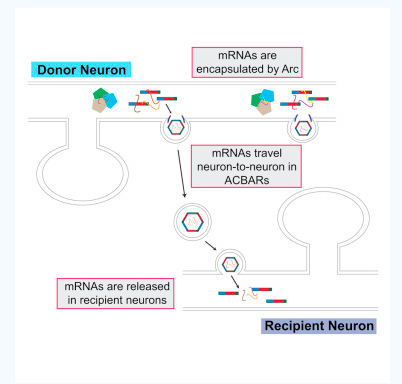Hundreds of millions of years ago, plant and animal genomes were littered with viral DNA debris. So far, it has generally been assumed that most of the virus residues integrated into the plant and animal genomes are inactive. But in January 11th, two Cell articles confirmed that some of them might have evolved into the genes that promoted cellular communication by Drosophila and mice experiments.
In the past, no non-viral protein had been found to encode capsid and transfer mRNA between cells. Now Jason Shepherd, a neuroscientist at the University of Utah, and Vivian Budnik, a cell biologist at the Massachusetts College of Medicine, have found this secret in mice and Drosophila, respectively.
The researchers found that many extracellular vesicles released by neurons contained the Arc gene. Long-term memory formation in genetically engineered mice with deletion of Arc was impaired, and some human nervous system diseases were also associated with Arc genes.
When Shepherd and Budnik analyzed the Arc gene sequences of mice and Drosophila, it was found that they were very similar to a kind of viral gene called gag. Retroviruses such as HIV used the Gag protein encoded by gag gene to assemble the protective shell of the virus. Under the protection of capsids, the virus was able to transmit its genetic material between cells.
The structure of Arc protein under high resolution microscope was similar to that of virus capsid, and they also carried the mRNA that encoded Arc. These capsids were wrapped in a small cell membrane to release cells as an extracellular vesicle. 
Figure 1. The structure of Arc protein under SEM microscope
Budnik's Drosophila study found that motor neurons linked to muscle cells could produce Arc vesicles. When the vesicles reached muscle cells and fused with them, they released Arc proteins and Arc mRNAs. Although the exact function of these substances to muscle cells was not known, Budnik had found that the link between muscle cells and neurons was reduced in Drosophila which lacked the Arc gene.

Figure 2. The neuronal gene Arc encodes a protein that forms virus-like capsids
The study on mice by Shepherd Group was similar to that of Drosophila. The neurons taken from the mouse brain could absorb the extracellular vesicles released by other neurons. Once the nerve impulses were activated, the neurons might use mRNA as a template to produce Arc protein.
They all believed that Arc affected adaptation and memory formation by participating in cellular communication or disruption. Although the Arc versions of Drosophila and mice were similar, they seemed to originate from two different retroviruses, and the time to entry animal body of the two viruses was also different.
There is still a lack of knowledge about the function of vesicles in the organism, and many researchers are excited about the new findings. "We've never known this before," said Kenneth Witwer, a molecular biologist at Johns Hopkins University who studied HIV and extracellular vesicles.
"It's not the answer," said Yvonne Couch, a biologist at Oxford University who studied extracellular vesicles. "This study actually raises more questions." She wanted to know exactly what stimulated neurons to produce extracellular vesicles and whether there were other substances involved in cell communication.
Budnik and Shepherd plans to continue to study Arc, but they are also looking for other similar proteins. There are about 100 gag-like genes in the human genome that encode capsid proteins. Does their presence mean that there are still many unknown forms of communication between cells?
"I think it's just the beginning," Shepherd said.
References:
1.Ashley et al. Retrovirus-like Gag Protein Arc1 Binds RNA and Traffics across Synaptic Boutons. Cell. 2018, 172, 262–274.
2.Pastuzyn et al. The Neuronal Gene Arc Encodes a Repurposed Retrotransposon Gag Protein that Mediates Intercellular RNA Transfer. Cell. 2018, 172, 275–288.

